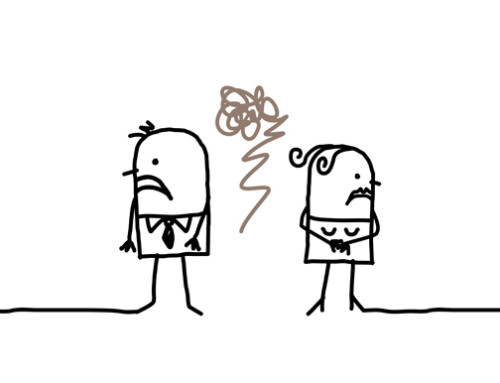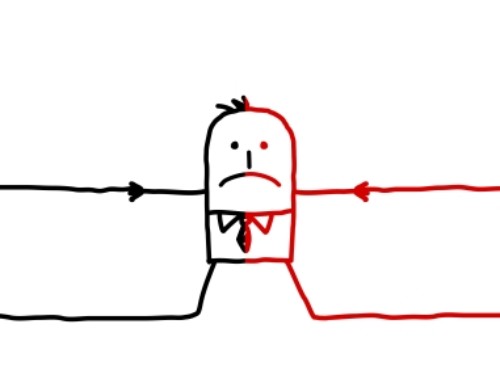In this article, I discuss how you can address behavioural issues with your children by paying attention to their favourable behaviours and ignoring their unfavourable behaviours.
In relationships of various kinds, it is unfortunately common for us to pay more attention to the other person’s negative behaviours than to their positive behaviours. Although it makes sense to some degree to follow this pattern, there are also many disadvantages of doing so.
In this article, I will focus on the benefits of reversing this pattern so that you pay more attention to the other person’s positive behaviours than to their negative behaviours. In the following sections, I will discuss how you can achieve this more desirable focus of attention. The examples I will provide pertain to the parent-child relationship although many of the principles discussed can apply to relationships with romantic partners, friends, other family members, co-workers and others.
Why we tend to ignore positive behaviours and pay attention to negative behaviours
If positive behaviours are occurring, there is a natural tendency to apply the ‘if it ain’t broke don’t fix it’ principle. This might occur if your child is behaving properly such as engaging in an activity quietly (e.g., drawing, playing with toys). If he or she is doing so, you might logically think that because they are doing what they’re supposed to be doing there is no need to pay attention to them for this positive behaviour.
In turn, it also makes sense for you to pay attention to your child’s negative behaviours. Doing so lets them know that what they are doing is not acceptable and therefore pointing out that you don’t like it should theoretically result in such behaviours decreasing in frequency.
Why ignoring positive behaviours and paying attention to negative behaviours often fails to achieve the desired results
Unfortunately, ignoring positive behaviours and paying attention to negative behaviours often fails to achieve the desired results of keeping the positive behaviours going while decreasing the frequency of the negative behaviours. In fact, it often leads to an even worse result which is opposite to what is desired—a decrease in the frequency of positive behaviours and an increase in frequency of negative behaviours.
The reason has to do with basic reinforcement principles. That is, we tend to repeat behaviours that we get rewarded for and are less likely to repeat behaviours for which we are not rewarded. In the scenario described, if your child is behaving positively, it makes more sense from a reinforcement perspective to reward them with positive attention for this behaviour.
In the same scenario, it also makes sense to ignore the negative behaviours of your child. The reason is that, given that your child is likely to find attention from you rewarding, they are likely to repeat the negative behaviours to get that attention from you. This will especially be the case if you are not rewarding them with positive attention for their positive behaviours. So even though you may intend to decrease your child’s negative behaviours by paying attention to them, the attention you give your child while focusing on these negative behaviours often serves as a reward which keeps the negative behaviours going.

The advantages of paying attention to positive behaviours and ignoring negative behaviours
Paying attention to the positive behaviours of your child will help to increase these behaviours because they will find the positive attention from you to be rewarding. Ignoring the negative behaviours of your child will tend to decrease the frequency of these behaviours because you will be withholding the reward of attention for these behaviours.
This favourable trend should increase as your child realizes that they are more likely to get the attention they crave from you by engaging in positive behaviours and that they are less likely to get attention from you by engaging in negative behaviours. This will be even more so because they are likely to find the favourable attention you give them for their positive behaviours more rewarding than the unfavourable attention you have been giving them for their negative behaviours.
How to pay attention to positive behaviours
Look for any positive behaviours your child displays as an opportunity to reward them with positive attention so that the behaviours will increase. The positive attention you give is more likely to be rewarding if it is specific rather than general.
Do this by giving ‘labelled praise’ for the behaviours so that your child links your positive attention to the particular positive behaviour in which they are engaging. For example, it is better to say, “I really like it when you play quietly with your toys” rather than saying, “Good boy” or “good girl” without reference to the behaviour.
How to decide which negative behaviours to ignore
Although in general you should try to ignore your child’s negative behaviours so that you don’t reinforce them and thus increase their frequency by giving them attention, there are instances in which you must pay attention to and address certain negative behaviours. These include such behaviours as hitting people and being destructive of property or objects.
On these occasions, it is appropriate to address the behaviour by clearly telling your child that it is unacceptable followed by a consequence such as a time out from the activity they were engaged in when they perpetrated the behaviour. However, please note that even on these occasions when you necessarily pay attention to your child’s negative behaviours, it is important to look for the next time your child engages in the ‘positive opposite’ of these negative behaviours. You can then reward these favourable behaviours with the positive attention of labelled praise. This will make it more likely your child will refrain from these ‘impossible to ignore’ negative behaviours.
In general, the best negative behaviours to ignore are those which are not harmful or destructive and which are likely being engaged in by your child to get attention. If you combine this ignoring technique with looking for opportunities to reward with labelled praise the positive opposites of the negative behaviours in question, you are likely to see this combination get you the best results in terms of increasing the frequency of your child’s positive behaviours and decreasing the frequency of their negative behaviours.
May you ‘accentuate the positives’ in your children’s behaviours,
Dr. Pat






Leave A Comment